Upper Teesdale is a Site of Special Scientific Interest in County Durham, North East England. While it consists mostly of dry heath, it is a diverse environment with significant wet heath and mire complexes in areas susceptible to poor drainage.
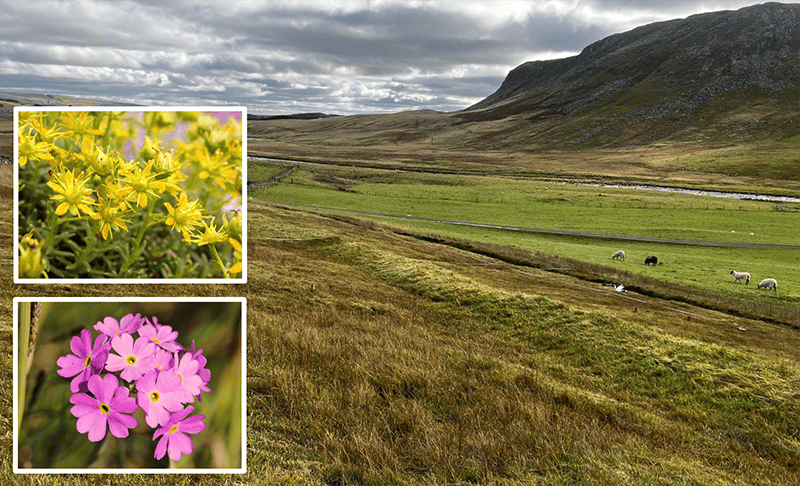
Image Credit: Delta-T Devices Ltd
The area is considered one of the UK’s most crucial botanical sites. It is extraordinarily rich in rare species of flora, including relics of the arctic-alpine environment representative of the previous glacial period.
However, in Upper Teesdale, this unique flora is facing a crisis. Recent surveys have revealed an average decline exceeding 50% since the 1970s, and 28 species are marked as being under threat of extinction.
The Fight to Save Upper Teesdale’s Rare Plants
Dr. Margaret Bradshaw (MBE) is a nationally renowned botanist specializing in plant conservation. She has devoted the majority of her professional career to the study and protection of Upper Teesdale’s rare plants since the 1950s.
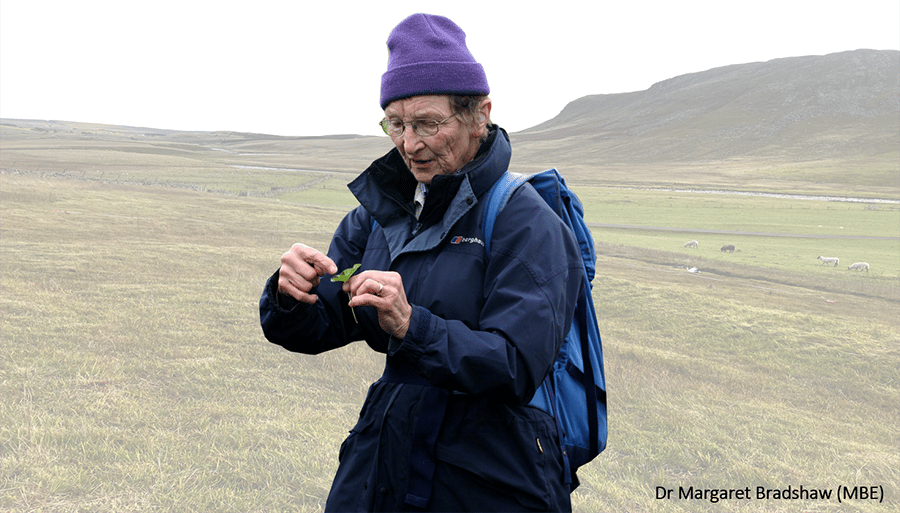
Image Credit: Delta-T Devices Ltd
Dr. Bradshaw is responsible for overseeing and monitoring the annual plant population studies at two main Teesdale locations: Widdybank and Cronkley Fells. She routinely makes her trips on horseback to some of the more remote locations. Her research is supported by specialist scientists and a team of trained volunteers (in close liaison with Natural England).
These detailed studies have generated some extremely significant data that indicate the recent alarming declines in several critical rare species. These results were primarily responsible for prompting Margaret to found her charity, the Teesdale Special Flora Research & Conservation Trust, in 2017, which aims to increase awareness relating to the ecological importance of the area and reverse the declines in the fauna.
Species Recovery Research Using the WET150 Soil Sensor
Widdybank Fell is considered one of the critical locations for vulnerable and rare plants in Upper Teesdale. It is also one of few places in Britain where ‘sugar limestone’ rock reaches the surface.
Dry grassland and wet flushed habitats on the sugar limestone support several species categorized as under threat. Sitting near the edge of the fell is a mire complex fed by calcareous springs, which sustains several rarities, including Alpine Bartsia, Bird’s‐eye Primrose, and Yellow Saxifrage.
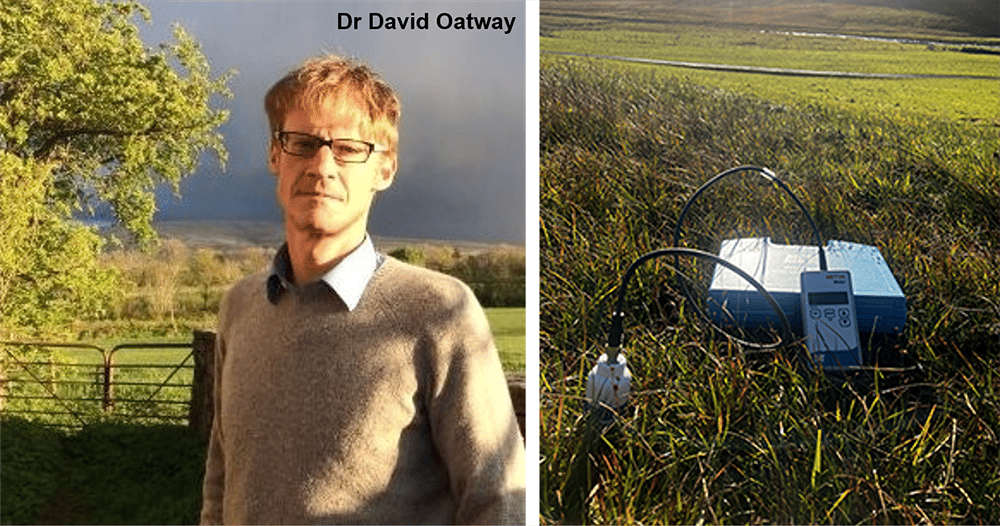
Image Credit: Delta-T Devices Ltd
To better understand why a significant number of rarer plants are in decline, Dr. David Oatway, an Ecologist and research consultant at Ketmar, has been contracted by the Teesdale Special Flora Research and Conservation to help develop and improve strategies for protection.
I’ve been setting up trials to help with the recovery of some of the rarest plant species in the British Isles, and this site – Widdybank Meadow, contains a calcareous mire complex in which the diversity of rare plants is incredible, however it is threatened by the influx of more aggressive sedges and rushes.
Dr. David Oatway, Ecologist and Research Consultant, Ketmar
The hydrology in this location is considered one of the significant underlying factors responsible for the destructive influx of less desirable flora. The current consensus is that this situation may result from a reduction in water flow through the mire (a consequence of the sward closing up). Consequently, this leads to increased acidic surface water that promotes the growth of the problematic ‘influx’ plants.
The consequence is a positive feedback loop between the acidification of the surface water and the closing of the sward.
Water Flow and Acidity Levels
To increase water flow away from the mire, a naturally closed historical drain was reopened in 2021 (an unconventional and site-specific experimental process). The digging of this drain was performed by hand and revealed a 10-12 cm raw humus layer covering the glacial till. This favors the acid-loving plants at the cost of the rarer alpine, arctic, and montane plants.
David continues, “I’m examining the differences in the moisture content of the soil surface above and below the newly opened drain, as well as within the calcareous mire more generally, to see if these correlate with any changes in vegetation composition. I’m also looking at pH levels, as it is suspected that water which sits longer on this mire may become more acidic, affecting the growth of certain plants.”
Selecting a Soil Moisture Sensor
To carefully evaluate the varying moisture levels in Widdybank Fell with precision and accuracy, David required a soil sensor that could perform in equal measure in drier and extremely wet soils.
After conducting some research, he decided to use the WET150, a digital sensor whose moisture-reading precision is significantly improved by compensating for any variations in the electrical conductivity of the soil (which it also measures).
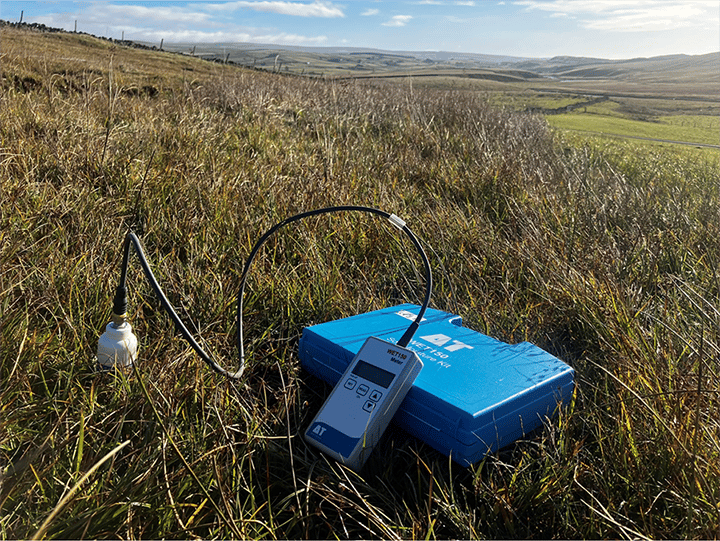
The portable Wet150 Sensor and readout meter kit used at Widdybank Fell. Image Credit: Delta-T Devices Ltd
David’s research involves identifying target measurement areas across the Widdybank Meadow and dividing them into a detailed grid layout, and mapping out the soil moisture and pH values to determine all variations. (pics a & b).
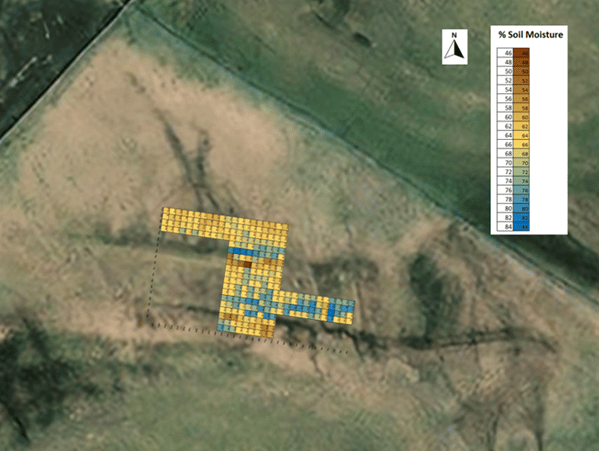
Picture a. Soil moisture grid measurements on Widdybank Meadow. Image Credit: Delta-T Devices Ltd
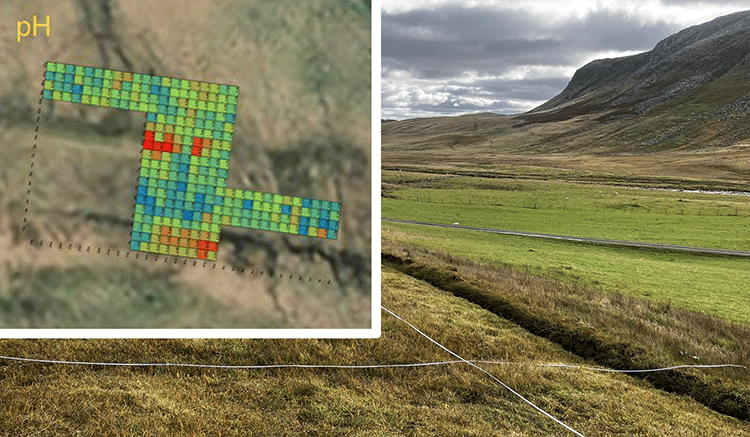
Picture b. pH grid measurements on Widdybank Meadow. Image Credit: Delta-T Devices Ltd
WET150 Moisture Measurement Performance in the Calcareous Mire
David has had a positive experience using the WET150 Sensor and kit at Widdybank Fell.
He explains, “It was clear from this project’s inception that I needed a soil sensor which was particularly good at differentiating well at high moisture levels.”
“I’ve now had the opportunity to thoroughly test the WET150 in the field and I’m pleased to say that it appears to have been very effective at recording percentage moisture in a the wet calcareous-fed mire environment. Knowing the topography of the site as I do, I can say that the data visuals we have created using the WET150’s output are really exciting,” he added.
The WET150 Multi-Parameter Soil Sensor
When the SDI-12-compatible WET150 Sensor is inserted into soil or substrate, it can measure three key variables that impact plant growth simultaneously: moisture content, temperature, and electrical conductivity (EC), which are s indicators of the typical nutrient level.
A vital feature of the WET150 is its capability to effectively calculate pore water conductivity (ECp), which indicates the ion content of the water available to the plant.
The WET150’s patented sensor electronics generates research-grade measurement precision with outstanding salinity and temperature stability.
In kit form (alongside a specialized hand-held readout unit), the WET150 offers a robust portable solution for researchers looking to evaluate moisture and salinity conditions in soils.
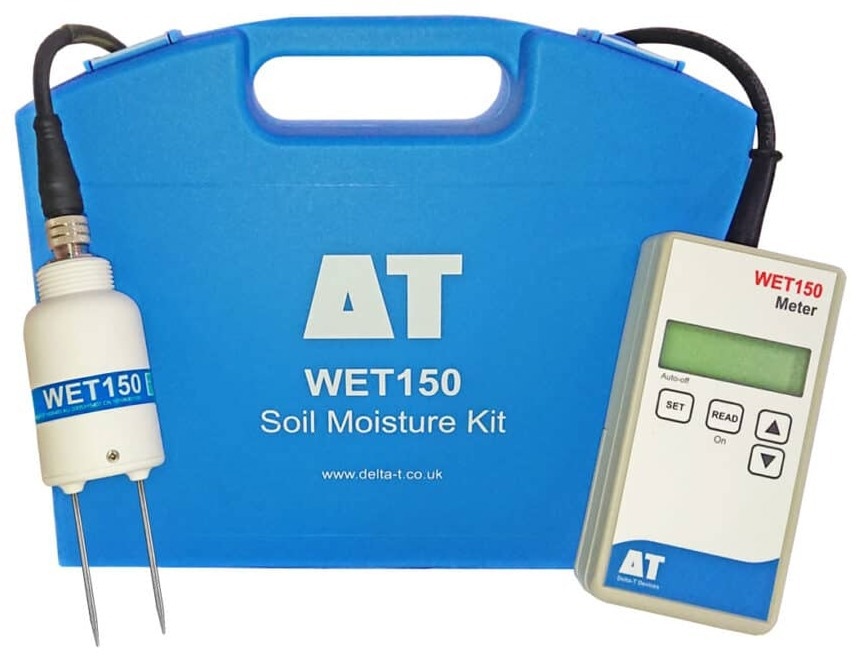
Image Credit: Delta-T Devices Ltd
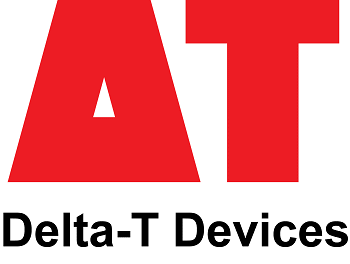
This information has been sourced, reviewed and adapted from materials provided by Delta-T Devices Ltd.
For more information on this source, please visit Delta-T Devices Ltd.